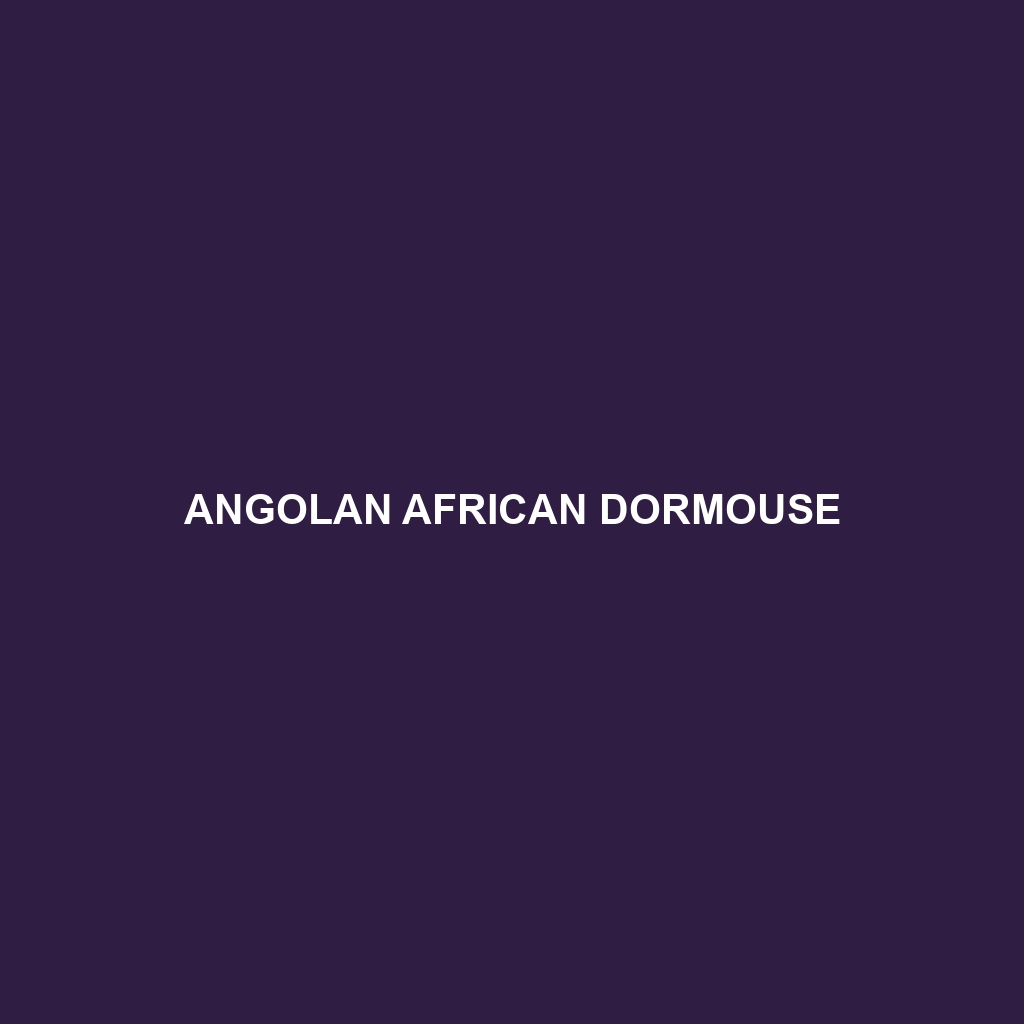Angolan African Dormouse (Common Name)
Common Name: Angolan African Dormouse
Scientific Name: Graphiurus angolensis
Habitat
The Angolan African Dormouse is primarily found in the central and southern regions of Africa, specifically in Angola, Namibia, and parts of Zambia. This small mammal prefers a variety of habitats, including woodlands, savannas, and scrub forests. Its presence is typically noted in areas with dense vegetation, which provides ample cover and food sources.
Physical Characteristics
The Angolan African Dormouse is characterized by its small size, typically ranging from 15 to 20 cm in length, including the tail. Its fur is predominantly soft and grayish-brown, with a lighter underbelly. Notable features include large, expressive eyes and long whiskers that aid in navigation. Its bushy tail is notably longer than its body and is used for balance while climbing.
Behavior
This nocturnal species exhibits solitary behavior during the day, retreating to tree hollows or burrows for shelter. At night, it becomes active, engaging in behaviors such as foraging and climbing. Angolan African Dormice are known for their agility and may often be seen leaping from branch to branch in search of food. They are also excellent climbers, using their sharp claws to grip onto tree bark.
Diet
The diet of the Angolan African Dormouse primarily consists of fruits, seeds, nuts, and insects. It plays a crucial role in seed dispersal within its habitat, consuming fruits and excreting seeds in new locations, which assists in plant growth. This adaptive feeding behavior enables it to thrive in various environments, making it a key species in maintaining ecological balance.
Reproduction
The reproductive habits of the Angolan African Dormouse include a breeding season typically occurring from October to February. During this time, males compete for the attention of females through vocalizations and displays. A female can give birth to a litter of 2 to 5 young after a gestation period ranging from 30 to 40 days, with offspring becoming independent within a few weeks.
Conservation Status
Currently, the Angolan African Dormouse is classified as Least Concern according to the IUCN Red List. However, habitat loss due to deforestation and agricultural expansion poses a potential threat to its population in certain areas, indicating the need for ongoing monitoring.
Interesting Facts
Did you know that the Angolan African Dormouse is capable of entering a state of torpor during extreme temperatures? This energy-saving behavior allows it to survive periods of scarce food supply, especially during the dry season. Additionally, these dormice have a unique ability to communicate through vocalizations, which helps maintain social interactions.
Role in Ecosystem
The Angolan African Dormouse plays a significant role in its ecosystem by acting as both a herbivore and prey for various carnivores. By feeding on fruits and seeds, it contributes to the health of its habitat through seed dispersal. In turn, it serves as an important food source for predators, helping maintain the food web balance within its environment.
